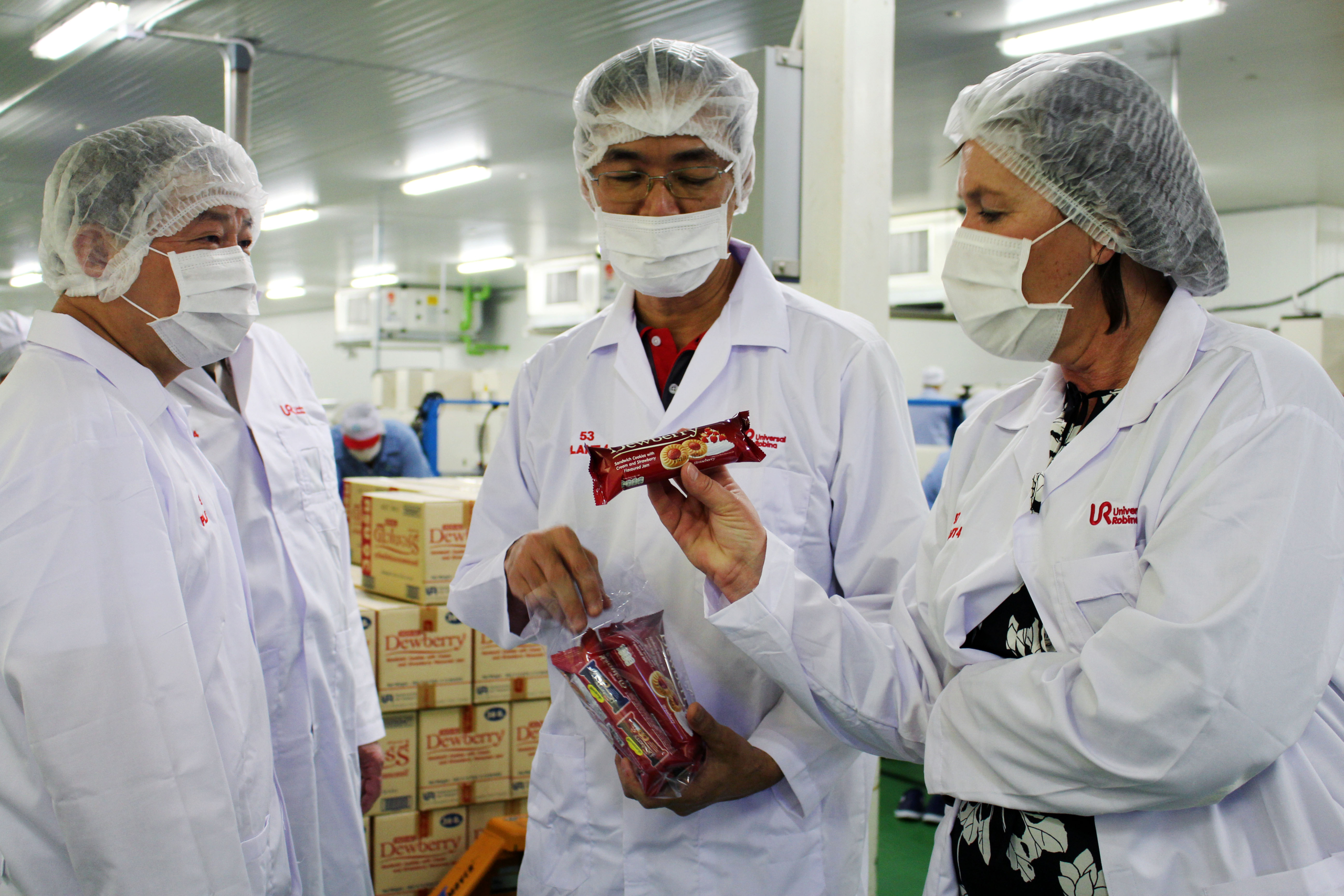U.S. Wheat Farmers See How Overseas Customers Value Their Crop
Montana farmer Denise Conover knows her wheat. She watches the markets, takes care of her land and stays up-to-date on current research to select the hard red winter (HRW) wheat varieties that will perform best on her farm. Once her wheat leaves the farm, she understands the valuable role everyone in the grain chain plays from the country elevator to the traders. But like many U.S. wheat farmers, once Conover’s wheat is loaded on a vessel and leaves the port, she knows much less about what happens to it next.
Every year, USW invites farmers (selected by state wheat commissions) to participate in teams that travel overseas to follow their wheat and offer the opportunity to learn from customers about the wheat quality characteristics needed in those markets. Earlier this month, Conover, a director on the Montana Wheat and Barley Committee from Broadview, MT, traveled to Thailand and the Philippines on the 2017 South Asia Board Team with Clint Vanneman, a wheat farmer from Ideal, SD, and a current USW director representing the South Dakota Wheat Commission, and Dustin Johnsrud, a wheat farmer from Epping, ND, serving his first four-year term on the North Dakota Wheat Commission. USW Communications Specialist Amanda Spoo led the team.
“Going on this trip was an opportunity for me to gain a better understanding of what our customers expect us to produce for them,” said Vanneman. “Exports are such an important part of the demand for U.S. wheat so it is important that we understand where we need to take our product and the value that USW has in marketing our grain.”
Conover added, “Now I see that so much of what we learned from overseas customers reflects back on the farm. It is amazing that the decisions we make on the farm carry forward to the end-users in other countries.”
The team visited customers and end users in Thailand and the Philippines, allowing them to observe the differences in wheat food production facilities and milling between the two countries, while also discussing U.S. wheat use in everyday products.
One of the highlights in Thailand was visiting the baking school run by United Flour Mill (UFM) Co., Ltd. USW has developed a very collaborative and productive relationship with the school since 1982, specifically to host preeminent bakery training courses led by USW Baking Consultant Roy Chung. The team also visited the UFM flour mill to see how integrated education has enhanced the return from its milling business.
“This is a resource for a huge area and multiple markets. The school brings in industry allies, bakers and millers to learn how to better utilize wheat. The fact that they are learning those skills using U.S. wheat makes this an essential part of our role in the market,” said Vanneman.
Another stop at a cookie and cracker company showed the team how generational changes and eating habits are shifting market preference and increasing the development of new wheat products in Thailand — and how USW activities help customers navigate new challenges and opportunities.
“Back in the United States we hear about the relationships USW has in overseas markets, but here we saw it on every level here. As farmers we can see the respect customers have for the trade service and technical support USW offers with USDA program funding,” said Conover. “We can go back and tell other U.S. wheat producers what we saw and heard, and that is going to carry more value.”
In the Republic of the Philippines, the team members were guests of honor at the 9th International Exhibition on Bakery, Confectionery and Foodservice Equipment and Supplies, known as “Bakery Fair 2017,” hosted by the Filipino-Chinese Bakery Association Inc. Vanneman was asked to give remarks on behalf of the team and all U.S. wheat farmers at a luncheon during the event. It was one of many opportunities for the team to talk about the HRW, hard red spring (HRS) and durum they grow and answer questions about their farms from customers. When Johnsrud spoke about the size and diversity of the farm he owns and manages with his dad and just one hired hand, many of the customers were shocked. All three farmers shared how weather, disease, transportation and other challenges can affect their farm from year to year and in turn affect the crops available for export — but they also highlighted how their commissions are working together to direct and fund public wheat breeding and research aimed at solving those challenges and improving both wheat quality and yield.
“We want them to know that we are listening. If we take anything home with us, I think it needs to be that we have to strive to show our breeders and other farmers that we need to keep our quality up as best we can,” said Conover. “If there is a variety out there that is not working, we need to get it out of the system.”
“Meeting with our customers shined a light on how strong the collaboration with USW is, and how essential it is to create greater preference for U.S. wheat,” said Vanneman. “Quality wheat and customer service lead to customer loyalty. The end-product user is loyal to our customers, which leads to stronger loyalty to U.S. wheat as a competitive supplier,” said Vanneman. The team will report to the USW board of directors later this year. To see pictures from this and other Board Team trips, please visit the USW Facebook page.
By Amanda J. Spoo, USW Communications Specialist


